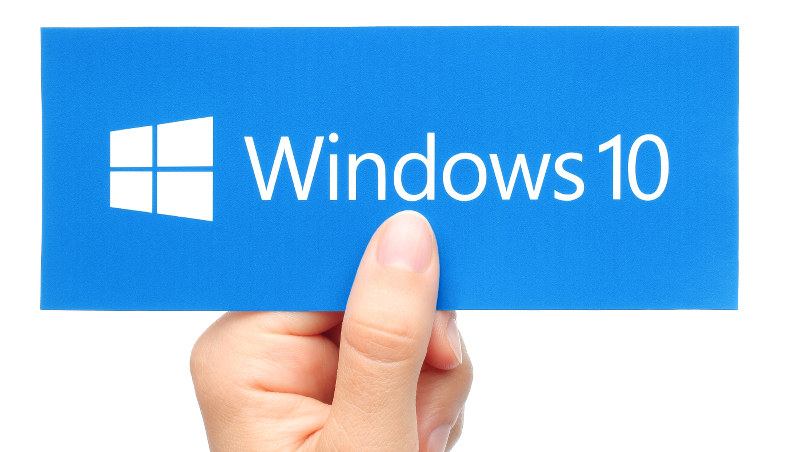How to install the Windows 10 Creators Update from USB
How to create a bootable USB and install the latest version of Windows 10 on your PC


Whatever operating system you're using on your computer, it's pretty inevitable you'll need to update it whenever a new upgrade is released to keep it free from bugs and running at optimum efficiency.
But it's also important you always install the latest updates on your system to keep your computer free from security holes and potential hacks by criminals.
The majority of updates are installable pretty easily - whenever a major upgrade arrives, you're asked whether you want to download it and, hey presto, in a few clicks, you're running the latest version.
But sometimes, there can be hiccups along the way, such as your device not having enough space on it to download the update before updating. This is especially the case with some of the heftier Windows 40 updates such as the Creators Update. The answer to your woes is creating a bootable USB that you can simply plug into your computer and install from there.
It takes less space on your machine itself and is also handy to have a backup, just in case something goes disastrously wrong during the update process, or you just want a backup of Windows 10 in your pocket if anything breaks later down the line. Although you may not have your data on the USB stick, being able to re-install your operating system in a few clicks is a massive bonus.
The advantages of a clean install
Windows 10 updates run automatically in the background, so you're free to get on with other tasks. It might take some time to run, but you can generally ignore it and concentrate on more important things. Once it's done, your machine will have a raft of new features and improvements for you to try out.
Sign up today and you will receive a free copy of our Future Focus 2025 report - the leading guidance on AI, cybersecurity and other IT challenges as per 700+ senior executives
That said, the upgrade doesn't always run as smoothly as it could. Because the Windows 10 Creators Update is fairly big, there's more potential for things to go wrong. Also, the OS stores the old version of Windows 10 on your hard drive in case you encounter problems and need to roll it back which means you'll lose a considerable chunk of drive space after it's installed.
A better option is to perform a clean install rather than an in-place upgrade because the end result will be a fresh operating system that isn't bogged down with old system files, unnecessary Registry entries and incorrect drivers. Once the installation is complete, you will need to spend some time reinstalling all your programs and copying over personal data and settings, but it's worth the extra effort because it means Windows will run faster and be less likely to crash once you've finished setting up everything.
Build a bootable USB flash drive
Many newer computers and laptops don't have an optical drive, so although it's easy enough to save the operating system to a CD or DVD to boot from, a USB flash drive is more versatile.
The easiest way to create a bootable USB flash drive is to use Microsoft's own Media Creation Tool (see our Mini Workshop below for instructions on how to do this). The Media Creation Tool has been updated to the very latest version of Windows 10, with the Creators Update, and you can use it to download and install the OS immediately or create your own installation media. You have the option of writing the operating system directly to a USB flash drive or saving it as an ISO file that you can manually write to the drive or a DVD later on.
The Windows 10 Creators Update is several gigabytes in size, so the download will take a while to complete, depending on the speed of your internet connection. Make sure the flash drive you choose is large enough we recommend a drive that's at least 8GB in size and preferably quite fast USB 3.0 is ideal if your PC supports this.
Another way to create a bootable drive is to use Rufus. This excellent third-party tool takes all the hard work out of creating a bootable drive from an existing ISO file. It can also create a Windows To Go drive which will let you install and run Windows 10 directly from the memory stick, turning it into a portable PC that you can use on your travels. You will need a very fast flash drive for this option, however.
Finally, you can manually create a bootable drive using an ISO file and a series of commands in the command prompt. While this works well enough, it's a bit fiddly and the other two methods described are much easier to perform.
How to use the bootable flash drive
Booting into the drive is very straightforward just plug it into a USB port on the PC you want to install Windows 10 on and start or restart your computer. It should automatically detect the drive and begin the boot process.
If your PC isn't set to boot from a USB flash drive, you'll need to specify this in the BIOS. Turn on your computer and press the required key to enter setup. This is likely to be F2 or Delete. Once the BIOS loads, look for a boot-order menu and set USB drive (or similar) as the first option. Press F10 to save the changes and reboot this time, your drive should be detected.
You don't need to boot into the drive if you're planning an in-place Windows 10 upgrade. Select the memory stick in File Explorer, open the Sources folder and double-click the setup.exe file to begin the upgrade process.
Activating Windows 10
Windows 10 was free for the first year, but that has now ended If you didn't upgrade before the deadline, then you will need to purchase a licence to activate the new OS. If you did upgrade your PC to Windows 10, then you will have been granted a digital entitlement which is tied to your computer and stored in the cloud. It doesn't matter if you subsequently rolled back your PC to Windows 7 or 8.1, or if you wiped or formatted your hard drive you'll still be able to install and use Windows 10 for free on that device. If you're planning a clean install, you will need your Windows key, which you can find by running NirSoft's ProduKey in Windows.
Creating a USB flash drive using the Media Creation Tool
- Go to the Media Creation Tool page and click the 'Download tool now' button. Run the file and accept the terms and conditions. In the next window, you are given the option to 'Upgrade this PC now' or 'Create installation media for another PC'. Select the second option.
- Click Next and choose the Windows 10 edition you require. By default, the tool will automatically pick the correct version for your current PC. If you intend to use the installer on a different computer, untick 'Use the recommended options for this PC' and change the Language, Edition and Architecture settings accordingly.
- Click Next, and choose 'USB flash drive'. Select the drive to write the installation files to. If your drive isn't listed, click the link to 'Refresh drive list'. Make sure you select the correct drive because the tool will wipe any existing files it contains. Click Next and Windows 10 will be downloaded and written to the drive.
Creating a bootable Windows 10 drive using Rufus
- Download the ISO file to the Desktop and insert a blank USB flash drive (or one you don't mind wiping the contents of) into your PC. Launch Rufus and select your USB drive in the drop-down box. Make sure you select the correct drive because you don't want the software wiping the wrong one by mistake.
- Click the button with the disc icon to the right of the ISO Image box and locate the ISO file you made or downloaded earlier. You can choose how to format the drive. Select the option to create a 'Standard Windows installation' rather than 'Windows To Go' and leave all the other settings as they are.
- Click Start to format the drive and copy over the relevant installation files. This may take a while, depending on the speed of your memory stick. When the progress bar shows it's completed, click Close. You now have a bootable Windows 10 drive you can use to perform an upgrade or clean install.

Clare is the founder of Blue Cactus Digital, a digital marketing company that helps ethical and sustainability-focused businesses grow their customer base.
Prior to becoming a marketer, Clare was a journalist, working at a range of mobile device-focused outlets including Know Your Mobile before moving into freelance life.
As a freelance writer, she drew on her expertise in mobility to write features and guides for ITPro, as well as regularly writing news stories on a wide range of topics.